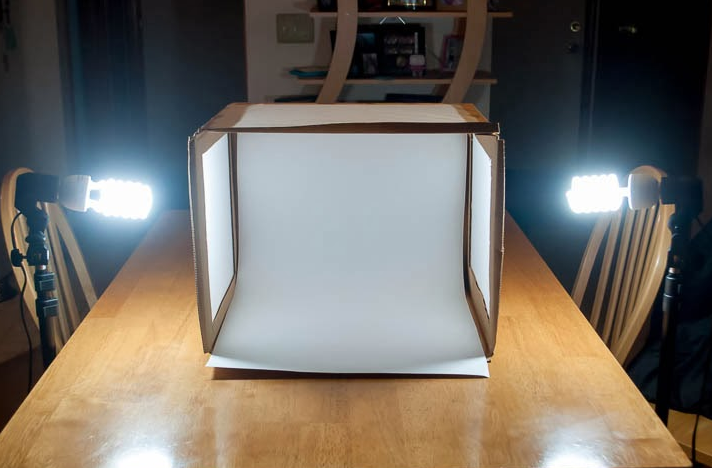What Is a Photo Lightbox Used For? In the world of photography and product imaging, precision and control over lighting are of paramount importance. One tool that has become indispensable for achieving this level of control is the photo lightbox, also known as a light tent or photography tent. This ingenious device has applications across various domains, from e-commerce product photography to amateur food bloggers. This comprehensive article will delve into the concept of a photo lightbox, its applications, benefits, and how it can enhance your photography endeavours.
What Is a Photo Lightbox Used For
What Is a Photo Lightbox Used For is described in detail here
Understanding the Photo Lightbox
A photo lightbox is a specialized enclosure made of translucent material, often fabric or plastic, which diffuses light evenly across the subject. It typically consists of a white or black backdrop that curves seamlessly from the back to the bottom, forming a gentle, continuous surface. The top and sides of the lightbox are translucent, allowing soft, diffused light to penetrate and surround the subject.
Applications of a Photo Lightbox
Product Photography: One of the most common uses of a photo lightbox is in product photography. It provides even lighting that eliminates harsh shadows and reflections, making products appear more appealing. E-commerce platforms and businesses often use lightboxes to create consistent, professional-looking product images.
Macro Photography: Macro photographers use lightboxes to capture intricate details of small subjects, such as insects, jewellery, or flowers. The even lighting and controlled environment enable precise focusing and stunning close-up shots.
Food Photography: Food bloggers, chefs, and restaurants employ photo lightboxes to capture mouthwatering images of dishes. The diffused light enhances the textures and colours of food, making it look more appetizing.
Jewellery Photography: Designers and sellers use lightboxes to showcase their creations with maximum clarity and detail. The controlled lighting minimizes unwanted reflections and emphasizes the jewellery’s features.
Art Reproduction: Artists and galleries photograph and reproduce artwork using lightboxes, ensuring accurate colour representation and detail preservation.
Benefits of Using a Photo Lightbox
Consistent Lighting: Photo lightboxes provide uniform, diffused lighting from all sides, eliminating harsh shadows and hotspots. This consistency is crucial for creating professional and appealing images.
Reduced Post-Processing: With even lighting and minimal shadows, photos taken in a lightbox often require less post-processing. This saves time and effort during the editing phase.
Control Over Reflections: The translucent sides of a lightbox help control reflections and glare, especially when photographing products with shiny or reflective surfaces.
Portable and Easy to Set Up: Many photo lightboxes are collapsible and portable, making them convenient for photographers working in different locations. They are also straightforward to set up, requiring minimal assembly.
Enhanced Depth of Field: The diffused lighting in a lightbox allows for greater depth of field, especially for macro photography, where maintaining sharp focus throughout the subject is crucial.
Versatile Backgrounds: Photo lightboxes often come with interchangeable backdrops, allowing photographers to choose the background colour or texture that best suits their subject.
Tips for Using a Photo Lightbox Effectively
Experiment with Angles: Be bold and adjust the angle and position of your subject within the lightbox to find the most flattering composition.
Use Additional Lighting: While a photo lightbox provides soft, even lighting, you can enhance it with external lights or reflectors to add highlights or fill shadows.
Choose the Right Background: Select a backdrop that complements your subject. White and black are versatile options, but other colours or textures can create unique aesthetics.
Maintain Cleanliness: Keep the interior of your lightbox clean to prevent dust or dirt from appearing in your photos. A lint roller can help with this.
Experiment and Learn: Mastering a photo lightbox takes practice, like any photography technique. Experiment with different settings and subjects to refine your skills.
Conclusion
In conclusion, a photo lightbox is a valuable tool that enhances the quality and consistency of photographs in various domains, including product photography, macro photography, food photography, and more. Its ability to provide even, diffused lighting and control over reflections makes it an indispensable asset for photographers and creatives looking to elevate their work. Whether you’re a professional photographer or a hobbyist, investing in a photo lightbox can significantly improve the quality of your images and expand your creative possibilities.
Frequently Asked Questions
Q1: What is a photo lightbox?
A1: A photo lightbox is an enclosure made of translucent material designed to provide even, diffused lighting for photography.
Q2: What are the typical applications of a photo lightbox?
A2: Photo lightboxes are used for product photography, macro photography, food photography, jewellery photography, and art reproduction.
Q3: Why is even lighting necessary in photography?
A3: Even lighting eliminates harsh shadows and hotspots, producing professional and appealing images.
Q4: How does a photo lightbox help control reflections and glare in photos?
A4: The translucent sides of a lightbox minimize unwanted reflections and glare on shiny or reflective surfaces.
Q5: What are some benefits of using a photo lightbox?
A5: Benefits include consistent lighting, reduced post-processing, control over reflections, portability, enhanced depth of field, and versatile background options.




